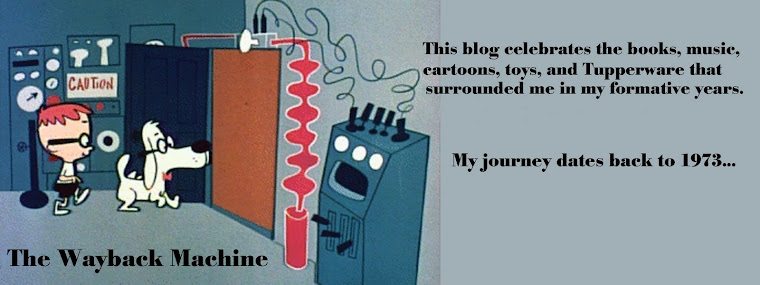 Retold by Watty Piper
Retold by Watty PiperIllustrated by George & Doris Hauman
Platt and Munk, 1954
I have a great love for this book. When life gets tough I often find myself thinking... "I think I can, I think I can, I think I can." If you get close enough to me you might even hear me muttering it under my breath!
According to Wikipedia, the best known incarnation of the story The Little Engine That Could is attributed to "Watty Piper", a pseudonym [a pseudonym? I had NO idea!] used by publishing house Platt & Munk. With illustrations by the esteemed Lois Lenski, this retelling of the tale The Pony Engine appeared in 1930. The first edition attributes Mabel C. Bragg as the originating author. However, Mabel C. Bragg, a school teacher in Boston, Massachusetts, never claimed to have originated the story. Indeed, The Pony Engine, which first appeared in the Kindergarten Review in 1910, was written by Mary C. Jacobs (1877-1970). Fascinating stuff.
According to Wikipedia, the best known incarnation of the story The Little Engine That Could is attributed to "Watty Piper", a pseudonym [a pseudonym? I had NO idea!] used by publishing house Platt & Munk. With illustrations by the esteemed Lois Lenski, this retelling of the tale The Pony Engine appeared in 1930. The first edition attributes Mabel C. Bragg as the originating author. However, Mabel C. Bragg, a school teacher in Boston, Massachusetts, never claimed to have originated the story. Indeed, The Pony Engine, which first appeared in the Kindergarten Review in 1910, was written by Mary C. Jacobs (1877-1970). Fascinating stuff.
 I love the pages that describe all the good things on the train meant for the boys and girls on the other side of the mountain. Here are a couple faves:
I love the pages that describe all the good things on the train meant for the boys and girls on the other side of the mountain. Here are a couple faves:

It's not my imagination, is it?
The milk bottles have legs and eyes, right?
I do love anthromorphic food!
The milk bottles have legs and eyes, right?
I do love anthromorphic food!

No comments:
Post a Comment